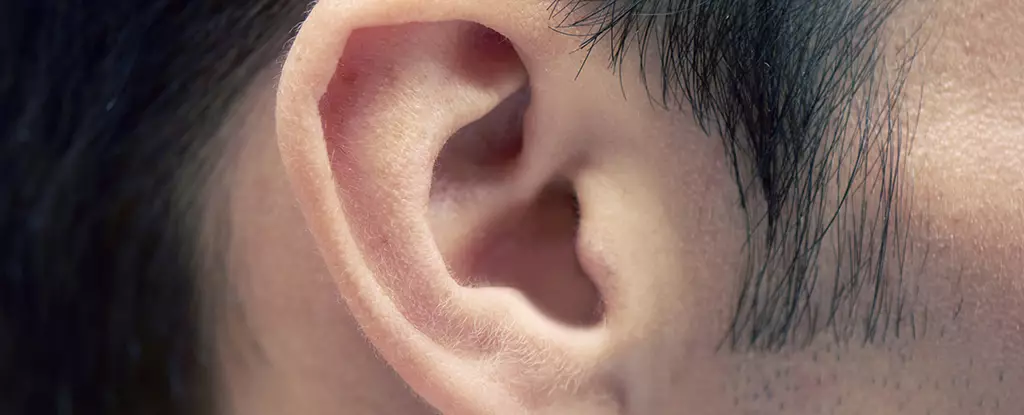Parkinson’s disease, a progressive neurological disorder, relentlessly impacts millions worldwide, often slipping into diagnosis only once symptoms have already caused substantial neural damage. The emphasis on early detection isn’t mere medical dogma; it’s an urgent, pragmatic necessity. Intervening before significant degeneration can stall progression, improve quality of life, and enhance treatment efficacy. Unfortunately, current diagnostic methods—primarily clinical observation and imaging—often come too late or prove inconclusive, delaying critical intervention.
Emerging research, spearheaded by scientists at Zhejiang University, offers a tantalizing beacon of hope: a potential diagnostic breakthrough through something as mundane yet powerful as earwax analysis. Yes, earwax—a substance often dismissed or overlooked—could be the key to unlocking earlier and more precise Parkinson’s detection.
From Humble Earwax to High-Tech Diagnostic Tool
Scientists have long suspected that Parkinson’s disease alters the body in subtle biochemical ways, including changes in body odor linked to sebum secretions. Yet, skin sebum is notoriously difficult to analyze reliably due to environmental contamination. The breakthrough here is the shift toward examining earwax, which is more insulated from external factors and thus a more stable medium for detecting volatile organic compounds (VOCs).
VOCs are chemicals that can vaporize at room temperature, and their patterns within earwax may reflect the metabolic disturbances caused by Parkinson’s. In the study, researchers identified four particular VOCs—ethylbenzene, 4-ethyltoluene, pentanal, and 2-pentadecyl-1,3-dioxolane—that differed markedly between Parkinson’s patients and healthy controls. These findings aren’t trivial; they suggest that earwax VOC profiles could form a distinct chemical signature for Parkinson’s, potentially transcending the current symptomatic or imaging-based diagnostic bottlenecks.
Artificial Intelligence Enriches Diagnostic Precision
Beyond chemical identification, the researchers innovatively harnessed artificial intelligence (AI) to interpret the VOC data, creating an “artificial intelligence olfactory system” (AIO). This tool reached an impressive 94.4 percent accuracy in distinguishing patients with Parkinson’s from non-affected individuals within the study cohort. While this sample was relatively small—209 participants, with about half diagnosed with Parkinson’s—the potency of AI to detect nuanced, multidimensional patterns that evade traditional analysis is unmistakable.
This synthesis of biology and machine learning not only drastically refines diagnostic accuracy but hints at scalable tools that could be handheld, inexpensive, and accessible, democratizing early Parkinson’s diagnosis in both developed and underserved regions.
The Pitfalls of Premature Hype and the Need for Rigorous Validation
Despite the excitement, it’s essential to temper enthusiasm with scientific rigor. Promising biomarkers frequently fail to replicate across diverse populations and larger samples. The Zhejiang team acknowledges this, calling for expanded studies encompassing different disease stages, ethnicities, and international research centers. Without this validation, the earwax test remains more a beacon of potential than a clinical reality.
Moreover, Parkinson’s is a complex disease with multifactorial origins and heterogeneous presentations—any biochemical test must wrestle with that complexity to avoid false positives or negatives. We cannot afford to oversimplify while chasing “miracle” diagnostics.
Implications Beyond Diagnosis: Understanding Disease Mechanisms
This research’s implications extend deeper than mere detection. The alteration of specific VOCs might reflect fundamental processes like inflammation and neurodegeneration associated with Parkinson’s. These chemical shifts could illuminate how the disease initiates and progresses at a molecular level, potentially unearthing new therapeutic targets.
For a center-left liberal perspective advocating evidence-based science combined with equitable healthcare innovation, this type of interdisciplinary research strikes a hopeful note. It embodies how patient-centric advancements—early detection and affordable diagnostics—can arise from creative reinterpretations of natural processes, amplified by cutting-edge technologies.
Final Thoughts: A Careful Optimism for a Complex Future
The concept of diagnosing Parkinson’s disease via an earwax swab might seem unconventional, even bizarre to some, but innovation rarely emerges from traditional routes alone. This line of study reflects the forward-thinking mentality that medical science must adopt: embracing novel data sources, integrating AI, and pushing for earlier interventions without succumbing to hype.
Ultimately, if these findings hold up under extensive scrutiny—and if technology scales affordably—the future could hold a simple, routine test catching Parkinson’s long before its devastating motor symptoms fully emerge. That future is worth striving for, though cautiously and inclusively, ensuring benefits reach the broadest range of patients worldwide—not just a select few in privileged healthcare systems.


Leave a Reply